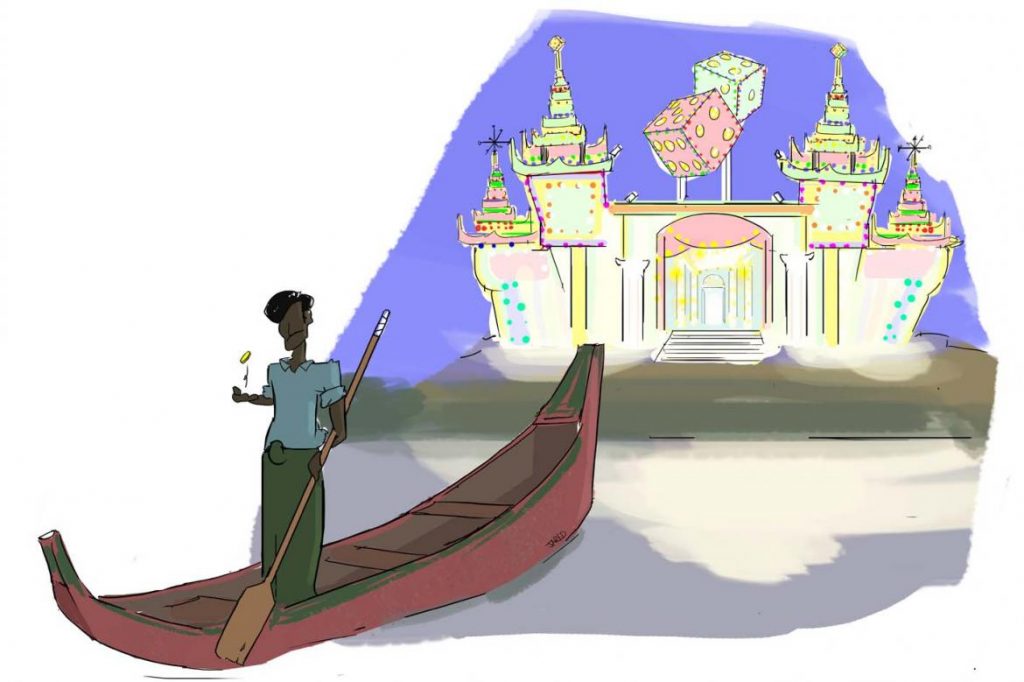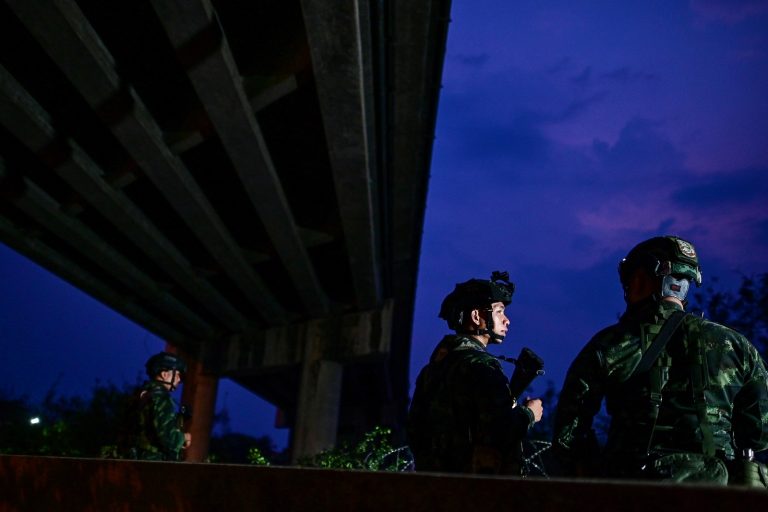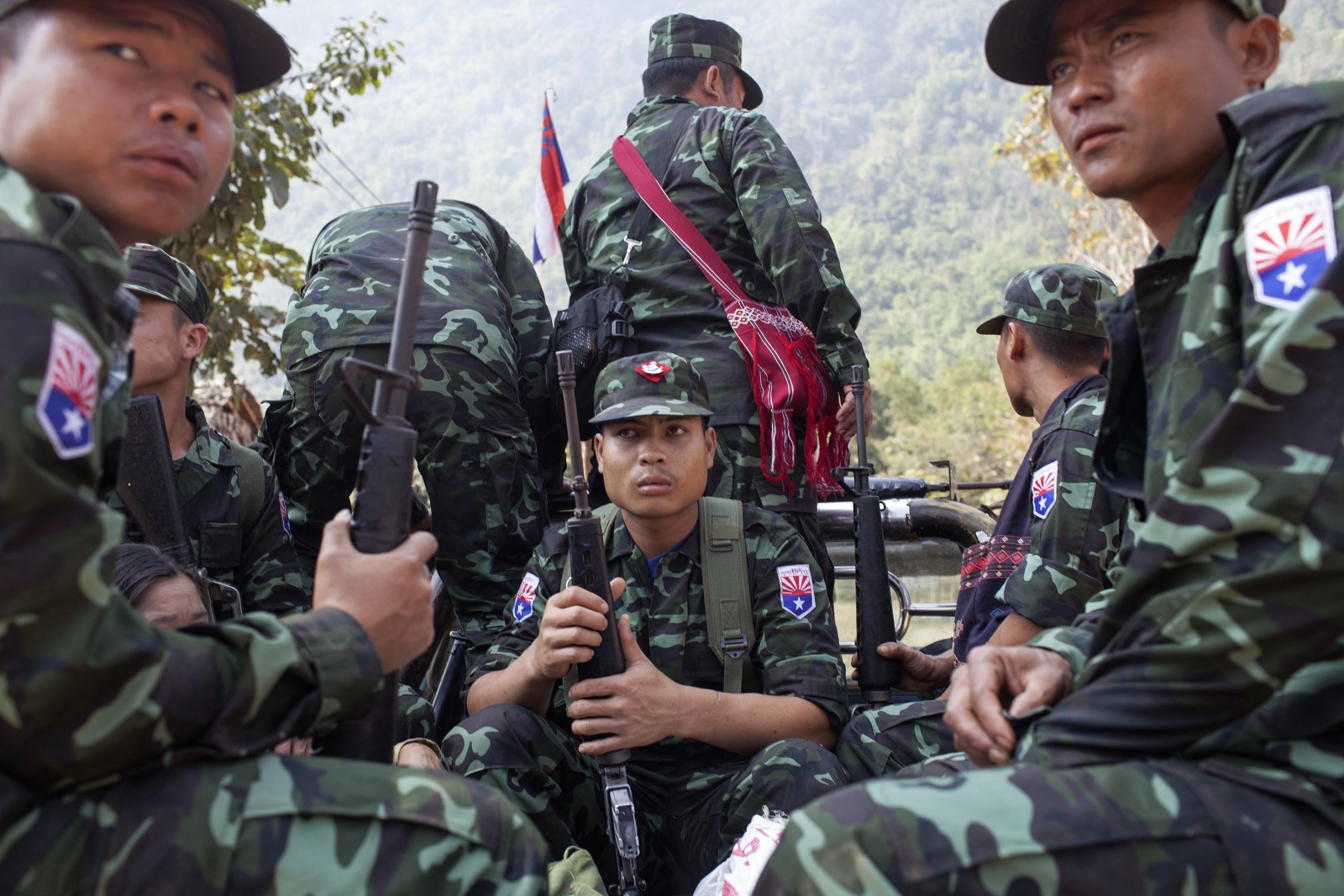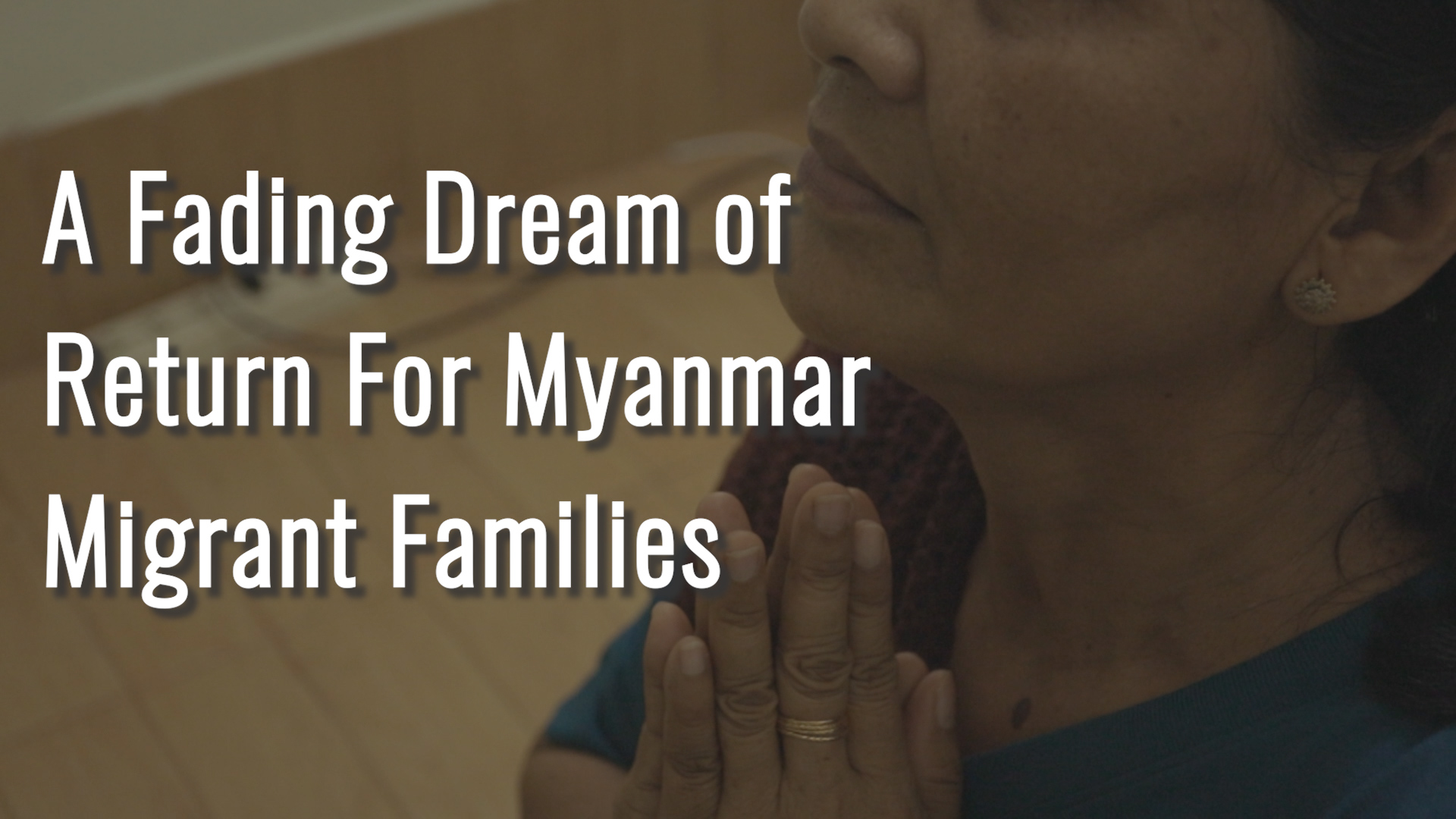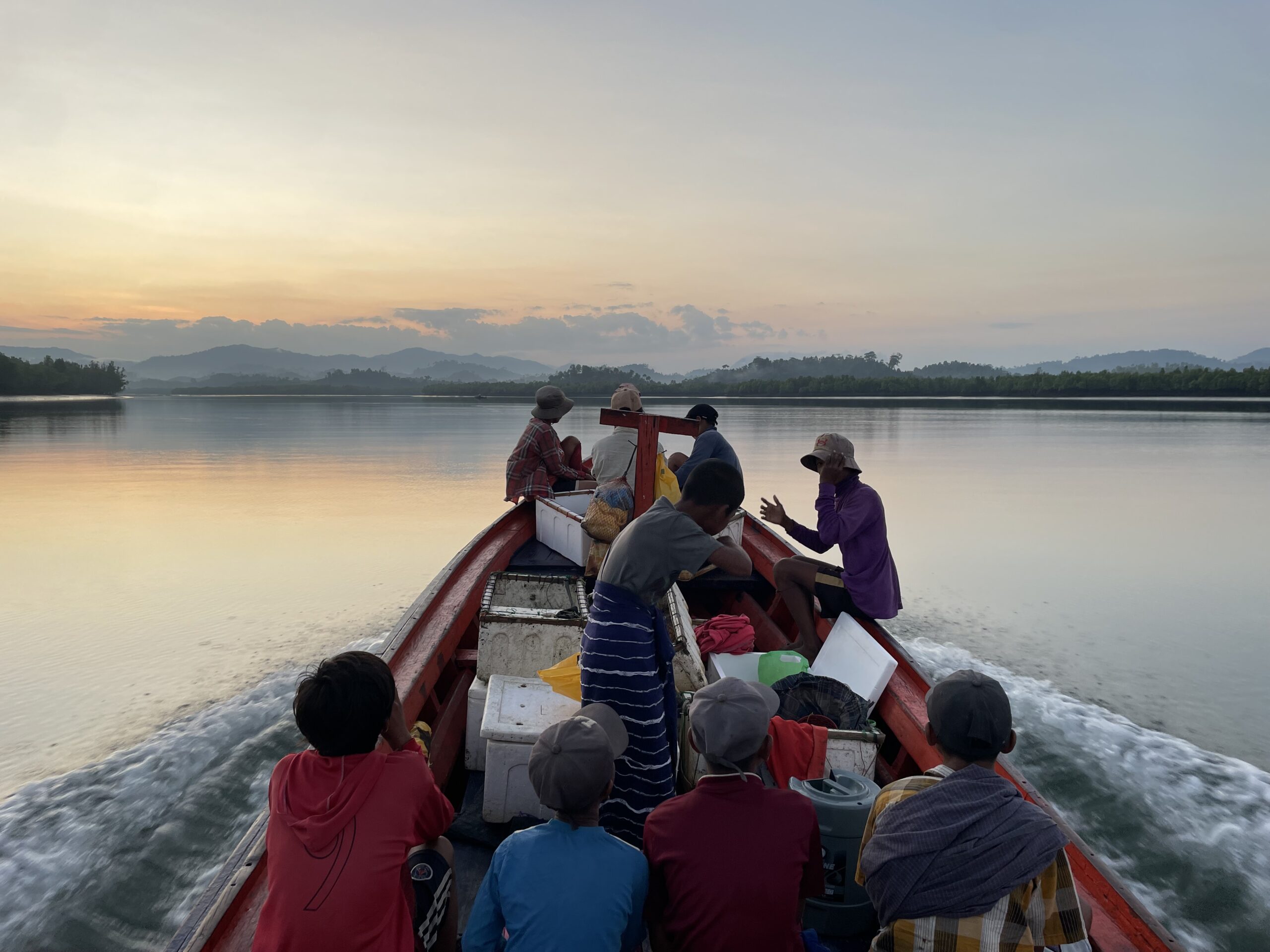Development in the Kayin hills might be an exploitative, foreign-owned playground for the rich, but it is progress all the same.
By JARED DOWNING | FRONTIER
A FEW YEARS ago I visited one of Yangon’s semi-legal casinos, a depressing room of fluorescent lights and sad, middle-aged men smoking cigarettes.
“Where were the cronies? Where were the women of ill-repute?” I wrote.
Well, apparently they’re all in Myawaddy, where a fortune’s won and lost on every deal, and all you need is a strong heart and nerves of steel. (Well, that, and also an illegal ferry across the Moei River.)
I had read about the new border casinos, mostly foreign-owned sanctuaries from Thailand’s staunch gambling laws glittering like Christmas trees on the Thai-Burmese border. But since the journalist community can’t have a good time without three verified sources and strict AP style, these articles focused on things like tax revenue and social impact.
Support more independent journalism like this. Sign up to be a Frontier member.
I still had no idea if Myawaddy’s casinos would be real Myanmar Monte Carlos, or Yangon-style “crank video slots while your kid plays Mario Kart downstairs” affairs.
Your hard-hitting Frontier columnist is happy to report that the casino he visited, Myawaddy Complex, was the real deal. We’re talking real dice, real cards, tables with actual felt, and cold, hard cash. There were real cocktail waitresses that ply one with free beer and then magically appear with tissues when one spills said beer on one’s trousers at the Tiger & Dragon table. (Hypothetically speaking.)
Tiger & Dragon was the table I switched to after watching a few hundred baht (the casinos use Thai currency) evaporate at some hopelessly complex card game. Tiger & Dragon was simple: Players place money on either the Tiger or the Dragon and the high card wins. Tiger won me many 20 baht notes, plus high-fives from other Tiger devotees for bringing Lady Luck, or Ko Kan as they say in Myanmar (by “they”, I mean “me”).
Outside, the resort was so new that a few of its steel and glass annexes still sported painter’s plastic and drywall dust. The casino, hotel, cocktail lounges and duty free store (I guess anything is “duty free” when carried across the border in a plank motorboat) were set around an immaculate amphitheatre-style plaza with football playing on a Jumbotron.
Most of the patrons were Thai, but I did discover a game room that accepted kyat: It was a plywood shed with seven or eight game consoles arranged on the betel-stained concrete floor, where players in thanaka and grubby pasoes laid down K200 and K500 notes.
Further down, the casino’s drive ended in a Tatmadaw guardhouse with people locked in wooden, medieval-style stocks (I was suddenly happy I followed the casino’s no-camera rule). Beyond were ordinary slum houses on a flooded dirt path.
The free beer was wearing off and I was beginning to feel a little concern coming on, so I retreated to the resort for dinner at the balcony restaurant. The sun was setting, and dozens of small lanterns glowed in the trees as the twilight turned brownish Moei silver.
What I mean is it was pretty. And yes, it was troubling that I had lost in two rounds of Tiger & Dragon what the people in the Mae La refugee camp not two hours away earn in a week. But it also wasn’t that simple.
I first visited Myawaddy and its Thai counterpart Mae Sot as a volunteer teacher more than 10 years ago, when the nights crackled with gunfire and it took two days through landmine-infested jungle just to get over the hills. One day, one of my computer students, a Karen teen, showed me a mock ad for an impossibly modern restaurant, all steel and glass. “A beautiful spot in Karen State!!” the caption read.
Well, now here it was. An exploitative, foreign-owned playground for the rich, sure, but it was there all the same.
Maybe Myanmar broke even on this hand.


